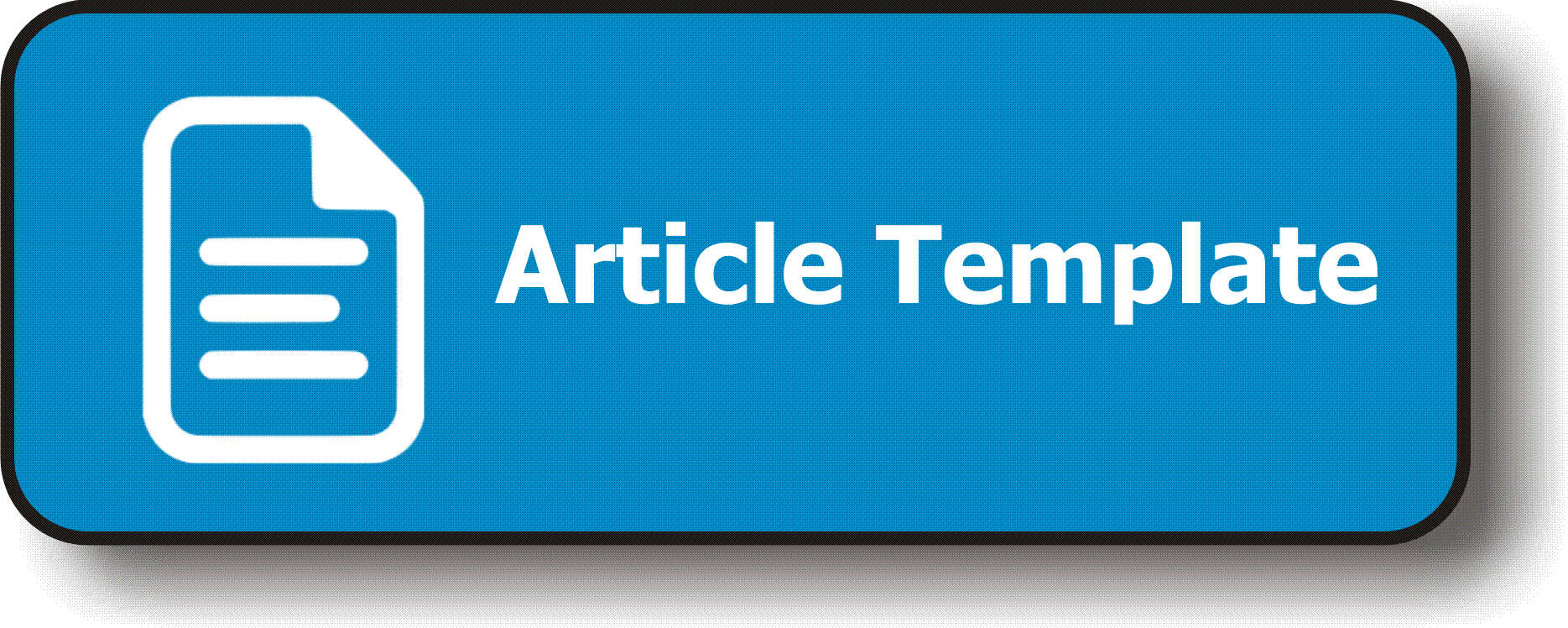The Use of SLiMS in the Processing of Library Materials at Elementary School Library
Abstract
Keywords
Full Text:
PDFReferences
Alwahaishi, S., & Snásel, V. (2013). Acceptance and use of information and communications technology: a UTAUT and flow based theoretical model. Journal of technology management & innovation, 8(2), 61-73. http://dx.doi.org/10.4067/S0718-27242013000200005
Anggito, A., & Setiawan, J. (2018). Qualitative research methodology. Sukabumi: CV Trace (Publisher Footprint).
Aral, S., Brynjolfsson, E., & Van Alstyne, M. (2012). Information, technology, and information worker productivity. Information Systems Research, 23(3-part-2), 849-867. https://doi.org/10.1287/isre.1110.0408
Ashiq, M., Rehman, S. U., & Mujtaba, G. (2021). Future challenges and emerging role of academic libraries in Pakistan: A phenomenology approach. Information Development, 37(1), 158-173. https://doi.org/10.1177/026666691989741
Ben Amram, S., Aharony, N., & Bar Ilan, J. (2021). Information literacy education in primary schools: A case study. Journal of Librarianship and Information Science, 53(2), 349-364. https://doi.org/10.1177/0961000620938132
Cahyono, J. E., & Heriyanto, H. (2013). Analisis pemanfaatan senayan library management system (slims) di kantor perpustakaan dan arsip daerah kota salatiga. Jurnal Ilmu Perpustakaan, 2(3), 139-152.
Chenhall, R., & Vance, D. (2013). The world of (almost) unique objects. In Museums in a Digital Age (pp. 54-62). United Kingdom: Routledge.
Cox, J. (2021). The higher education environment driving academic library strategy: A political, economic, social and technological (PEST) analysis. The Journal of Academic Librarianship, 47(1), 1-11. https://doi.org/10.1016/j.acalib.2020.102219
Dachlan, H. S., & Hasanah, R. N. (2013). Pengembangan sistem penelusuran katalog perpustakaan dengan metode Rocchio Relevance Feedback. Jurnal EECCIS, 7(1), 47-52. http://dx.doi.org/10.21776/jeeccis.v7i1.201
De Sarkar, T. (2021), "Integrating research tools with library websites", Library Hi Tech News, Vol. 38 No. 8, pp. 16-21.
Ennis-Cole, D., & Smith, D. (2007). Assistive technology and autism: Expanding the technology leadership role of the school librarian. School Libraries Worldwide, 17(2), 86–98. https://doi.org/10.29173/slw6820
Erickson, F. (2012). Qualitative research methods for science education. In Second international handbook of science education (pp. 1451-1469). Springer, Dordrecht.
Farhadi, M., & Ismail, R. (2014). The impact of information and communication technology availability on economic growth. Research Journal of Applied Sciences, Engineering and Technology, 7(7), 1226-1231. https://doi.org/10.3390/economies7010021
Harahap, W. R. (2018). Empat jenis perpustakaan zaman “Now”. JIPI (Jurnal Ilmu Perpustakaan Dan Informasi), 3(2), 194–202. http://dx.doi.org/10.30829/jipi.v3i2.1945
Hutasoit, H. R. (2014). Perpustakaan dan penyebaran informasi. Iqra': Jurnal Perpustakaan dan Informasi, 8(2), 177-185.
Iskandar, Z. F., Sukaesih, S., Rukmana, E. N., & Samson, C. M. S. (2021). Grab and go alternatif layanan peminjaman buku Pustakalana Children’s Library di masa pandemi. Informatio: Journal of Library and Information Science, 1(1), 83-98. https://doi.org/10.24198/inf.v1i1.31740
Kesuma, M. E. K., Yunita, I., & Meilani, F. (2021). Penerapan aplikasi SLiMS dalam pengolahan bahan pustaka di Perpustakaan Perguruan Tinggi. Jurnal Adabiya, 23(2), 248.
Leguina, A., Mihelj, S., & Downey, J. (2021). Public libraries as reserves of cultural and digital capital: addressing inequality through digitalization. Library & Information Science Research, 43(3), 101103. https://doi.org/10.1016/j.lisr.2021.101103
Loertscher, D. V., & Woolls, B. (2021, March). The information literacy movement of the school library media field: a preliminary summary of the research. In IASL Annual Conference Proceedings (pp. 337-366). https://doi.org/10.29173/iasl8211
Martins, S., Lopes, I. C., & Carvalho, M. (2021). Perceptions of the skills of graduates in the Library and Information Science and Technology Degree of P. Porto, Portugal: A statistical data analysis of the alignment between students, teachers, and employers. Evidence Based Library and Information Practice, 16(3), 46-66. https://doi.org/10.18438/eblip29944
Martinović, I., Kim, S. U., & Stanarević Katavić, S. (2021). Study of health information needs among adolescents in Croatia shows distinct gender differences in information seeking behaviour. Health Information & Libraries Journal. 6(00), 1-22. https://doi.org/10.1111/hir.12369
Massey, D., Craswell, A., Ray-Barruel, G., Ullman, A., Marsh, N., Wallis, M., & Cooke, M. (2020). Undergraduate nursing students' perceptions of the current content and pedagogical approaches used in PIVC education. A qualitative, descriptive study. Nurse education today, 94, 104577. https://doi.org/10.1016/j.nedt.2020.104577
Orbih, D. E., & Aina, A. J. (2014). Issues, benefits and challenges of original cataloging versus copy cataloguing: The experience at the Lagos State University. International Journal of Library and Information Science, 6(5), 88-97.
Owan, V. J., Agurokpon, D. C., & Owan, A. V. (2022). Evaluation of the availability and utilization status of texts in core subjects in primary schools’ libraries. Library Philosophy and Practice, 9(3)1-15.
Sani, A. (2017). Sistem manajemen otomasi perpustakaan berbasis Open Source Senayan Library Management System (SLiMS). SEIKO: Journal of Management & Business, 1(1), 47-65. https://doi.org/10.37531/sejaman.v1i1.72
Sharma, L., Chandrasekaran, A., Boyer, K. K., & McDermott, C. M. (2016). The impact of health information technology bundles on hospital performance: An econometric study. Journal of Operations Management, 41, 25-41. https://doi.org/10.1016/j.jom.2015.10.001
Shukla, R., Nisha, F., & Verma, M. K. (2021). Assessment of digital information literacy skills among the Library and Information Science students of the University of Delhi. Library of Progress-Library Science, Information Technology & Computer, 41(1) 1-8. https://10.5958/2320-317X.2021.00001.5
Suwarno, W. (2016). Library Lifestyle: Trend dan ide kepustakawanan. Yogyakarta: Ladang Kata.
Tyagi, A. K., & Senthil, V. (2015). Library automation in india: Assessment of library services platforms. DESIDOC Journal of Library & Information Technology, 35(6) 408-416. https://doi.org/10.14429/djlit.35.6.8895
Yugianus, P Pejanović-Djurišić, M., Gavrilovska, L., & Fratu, O. (2017). ICT trends for future smart world. Wireless Personal Communications, 92(1), 1-3. https://doi.org/10.1007/s11277-016-3886-4
DOI: https://doi.org/10.17509/edulib.v12i1.42108
DOI (PDF): https://doi.org/10.17509/edulib.v12i1.42108.g27434
Refbacks
- There are currently no refbacks.
Copyright (c) 2022 Edulib

This work is licensed under a Creative Commons Attribution-NonCommercial-ShareAlike 4.0 International License.

This work is licensed under a Creative Commons Attribution-ShareAlike 4.0 International License.





